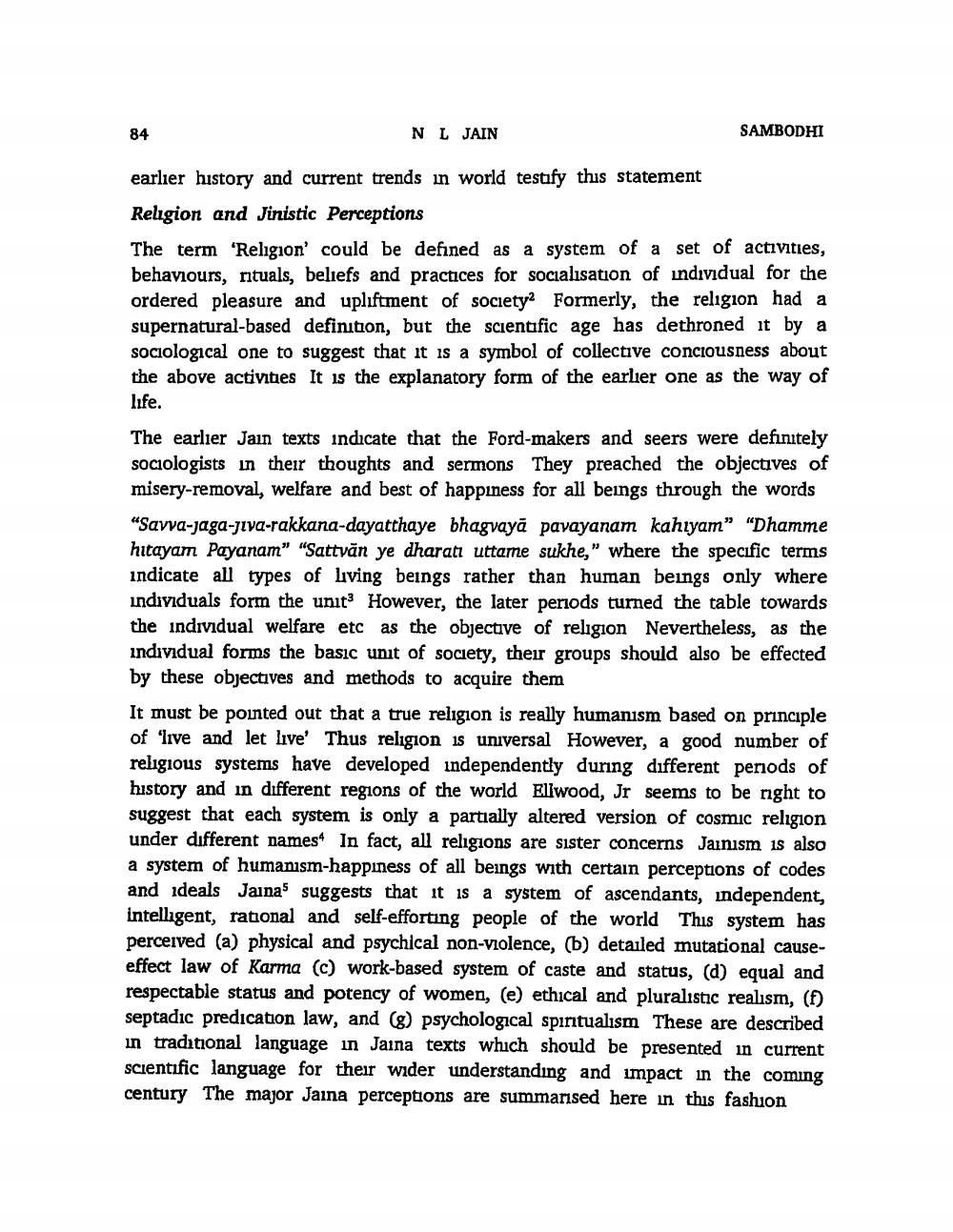________________
84
NL JAIN
SAMBODHI
earlier history and current trends in world testify this statement Religion and Jinistic Perceptions The term 'Religion could be defined as a system of a set of activities, behaviours, rituals, beliefs and practices for socialisation of individual for the ordered pleasure and upliftment of society Formerly, the religion had a supernatural-based definition, but the scientific age has dethroned it by a sociological one to suggest that it is a symbol of collective conciousness about the above activities It is the explanatory form of the earlier one as the way of life.
The earlier Jain texts indicate that the Ford-makers and seers were definitely sociologists in their thoughts and sermons They preached the objectives of misery-removal, welfare and best of happiness for all beings through the words “Savva-jaga-jiva-rakkana-dayatthaye bhagvayā pavayanam kahıyam" "Dhamme hitayam Payanam" "Sattvän ye dharat uttare sukhe," where the specific terms indicate all types of living beings rather than human beings only where individuals form the unit However, the later periods turned the table towards the individual welfare etc as the objective of religion Nevertheless, as the individual forms the basic unit of society, their groups should also be effected by these objectives and methods to acquire them It must be pointed out that a true religion is really humanism based on principle of 'live and let live' Thus religion is universal However, a good number of religious systems have developed independently during different periods of history and in different regions of the world Ellwood, Jr seems to be right to suggest that each system is only a partially altered version of cosmic religion under different names in fact, all religions are sister concerns Jainism is also a system of humanism-happiness of all beings with certain perceptions of codes and ideals Jainas suggests that it is a system of ascendants, independent, intelligent, rational and self-efforting people of the world This system has perceived (a) physical and psychical non-violence, (b) detailed mutational causeeffect law of Karma (c) work-based system of caste and status, (d) equal and respectable status and potency of women, (e) ethical and pluralistic realism, (f) septadıc predication law, and (8) psychological spiritualism These are described in traditional language in Jaina texts which should be presented in current scientific language for their wider understanding and impact in the coming century The major Jaina perceptions are summarised here in this fashion




